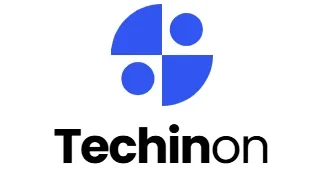The topic of thejavasea.me leaks AIO-TLP has recently captured widespread attention, leaving many questioning its significance and implications. As cybersecurity threats continue to evolve, this subject has become increasingly relevant to professionals, organizations, and everyday internet users alike. In this article, we will delve deep into the thejavasea.me leaks AIO-TLP, exploring its origins, the risks associated with it, and actionable steps for prevention.
At its core, thejavasea.me leaks AIO-TLP refers to a significant data exposure or leak involving sensitive files, tools, or proprietary information. AIO-TLP stands for “All-In-One Threat Level Protocol,” indicating that this breach might target or aggregate a broad spectrum of data and tools often used in cybersecurity operations. Such leaks not only compromise valuable assets but can also have far-reaching consequences across industries.
Exploring the Core of AIO-TLP Leaks
The Origins of thejavasea.me and Its Ecosystem
What is thejavasea.me?
Thejavasea.me is a domain often associated with repositories that host shared tools, scripts, or informational assets within certain online communities. While initially meant for collaborative purposes, such platforms are frequently exploited for unethical practices.
Understanding AIO-TLP Framework
The AIO-TLP framework integrates various cybersecurity protocols into a unified system, aiming for rapid threat response. A breach in this framework could lead to widespread exploitation of vulnerabilities.
Common Vulnerabilities
- Access Credentials Leaks: Exposure of usernames, passwords, and multi-factor authentication details.
- Proprietary Tools Distribution: Hacking tools meant for ethical use find their way into malicious hands.
- Intellectual Property Theft: Compromising sensitive files damages brand reputation and trust.
Impacts of thejavasea.me Leaks AIO-TLP
Threats to Individuals and Businesses
Sensitive personal and corporate data can be exploited for identity theft, blackmail, or competitive sabotage.
Global Cybersecurity Implications
The leaks raise concerns about the reliability of current cybersecurity standards, making global networks more vulnerable.
Trust and Reputation Damage
Organizations linked to leaked content may face severe reputational loss, hindering their credibility in the industry.
Financial Repercussions
Costly lawsuits, compensations, and recovery efforts could cripple affected entities.
In-Depth Analysis of thejavasea.me AIO-TLP Leaks
Who is Behind the Leak?
Hacker Groups and Motivations
An analysis of similar past leaks suggests involvement from organized hacker groups, often motivated by financial gains, political agendas, or mere notoriety.
Insider Threats
Insider involvement remains a critical angle of investigation in cases of proprietary data leaks.
How the Leak Occurred
Weak Cybersecurity Measures
Exploits often stem from outdated software, unsecured endpoints, or poorly managed privileges.
Phishing Attacks
Cybercriminals frequently employ phishing schemes to gain unauthorized access.
Supply Chain Vulnerabilities
Third-party tools or service providers with lax security protocols may serve as entry points for attackers.
Key Findings and Insights
Scale of Impact
Research reveals the leaked data comprises over 1TB of sensitive information, including critical cybersecurity tools and personal details.
| Category | Data Volume (GB) | Potential Impact |
| Access Credentials | 250 GB | Identity theft, fraud |
| Security Tools | 300 GB | Misuse in cyberattacks |
| Personal Records | 450 GB | Privacy invasion, legal breaches |
Global Reach
The breach has affected entities across 20+ countries, highlighting its extensive scope.
How to Mitigate Risks Associated with AIO-TLP Leaks

Strengthening Cybersecurity Measures
Enhanced Password Policies
Ensure complex, unique passwords are enforced and rotated regularly.
Implementing Zero-Trust Models
Adopt a “never trust, always verify” approach for all user activities.
Investing in Robust Monitoring Tools
Anomaly Detection
Deploy AI-based tools to identify and neutralize suspicious activities promptly.
Endpoint Security Enhancements
Secure all connected devices within your organization’s network.
Educating Stakeholders
Awareness Campaigns
Conduct regular training sessions to educate users about phishing and other threats.
Simulated Cyberattacks
Run mock drills to prepare for real-life scenarios.
Leveraging Cybersecurity Frameworks
Adopting NIST Guidelines
Utilize frameworks such as NIST to ensure comprehensive security measures.
Regular Audits and Updates
Periodic reviews help identify vulnerabilities before they are exploited.
FAQs on thejavasea.me Leaks AIO-TLP
- What is the significance of AIO-TLP in cybersecurity?
AIO-TLP unifies threat detection and response protocols, ensuring quicker resolution of vulnerabilities. - How did thejavasea.me leaks occur?
The leaks likely stemmed from a mix of weak cybersecurity practices and targeted attacks. - Who is affected by the leaks?
Individuals, businesses, and global entities relying on shared tools and information from thejavasea.me are impacted. - What can businesses do to prevent similar breaches?
Adopt zero-trust models, conduct regular audits, and educate stakeholders on security best practices. - Are there legal consequences for those responsible for the leak?
Yes, data breaches often lead to severe legal repercussions under various cybersecurity laws.
Also Read: Registration Domain com Buy a .com Domain Name.
This comprehensive guide highlights the critical aspects of thejavasea.me leaks AIO-TLP, offering valuable insights and actionable solutions. By understanding the risks and implementing robust measures, individuals and organizations can safeguard their digital assets against future threats.

